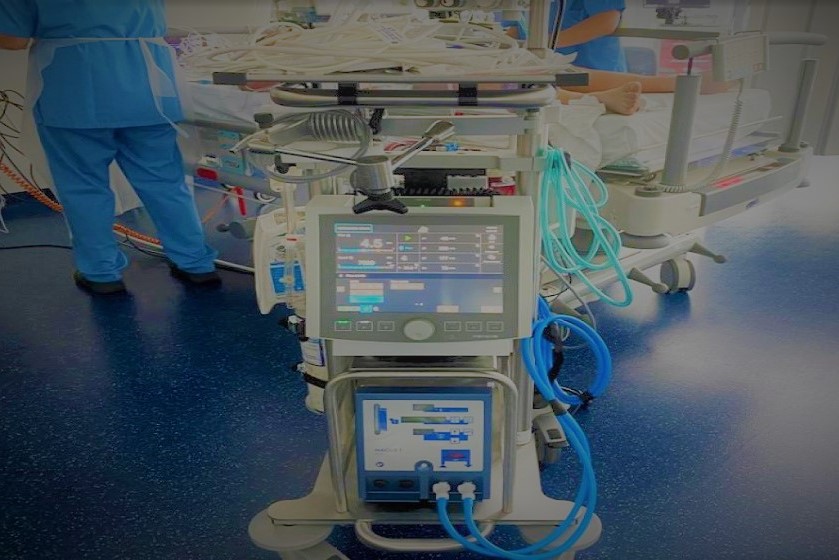
Extracorporeal circulation: an overview
The extracorporeal circulation allows oxygenation and pumping of the circulating blood during cardiac surgery generally performed with a stopped heart; the heart will be stopped, for example, to repair or replace a valve or ascending aorta or to perform bypasses
It may be necessary to stop extracorporeal circulation for short periods of time
During the absence of circulation, it will be necessary to protect the brain from probable ischaemic damage.
Selective cerebral perfusion under hypothermia will therefore be performed, directly perfusing the encephalon through the carotid arteries with blood at a lower than normal temperature.
This will reduce the risk of neurological complications, but does not completely eliminate it.
Extracorporeal circulation could lead to complications related to mal-perfusion of several orders
Of the organs involved, those at greatest risk are the kidneys and the encephalon, which would then trigger post-operative renal failure.
If kidney damage already persisted before the operation, there could be worsening following the operation, and then recourse to filtration and dialysis treatments will be necessary, which may be temporary and in some cases permanent.
In cases of aortic bypass surgery, the operation could be performed by beating heart without recourse to extracorporeal circulation.
However, this intervention cannot be performed in all cases.
How is extracorporeal circulation performed?
Blood will be taken from the right atrium or the hollow veins of the heart and diverted to the heart-lung machine where it will be filtered, oxygenated and returned to the patient at the level of the most distal part of the ascending aorta.
Through the use of special solutions, the heart will be stopped and its metabolism protected when it is not supplied with blood.
When the operation is complete, the heart will be perfused and start beating again.
The extracorporeal circulation will be suspended, allowing the heart and lungs to resume their normal functions.
In some open-heart operations, it may be necessary to stop the heart to repair the heart muscle, valves or other organs.
The heart-lung machine will allow the surgeon to stop the heart while preserving blood circulation.
The machine consists of a pump, which functions like the heart, and an oxygenator, which performs the functions of the lungs.
During a heart-lung bypass, poorly oxygenated blood is first diverted from the upper cavities of the heart and directed to the reservoir of the heart-lung machine.
The blood is then transferred to the oxygenator, which enriches the blood with oxygen.
Finally, a pump will return the blood to the patient’s arterial system, and the body can resume blood circulation.
Once the damage has been repaired, the heart can start beating again and the heart-lung machine will be removed.
Is extracorporeal circulation dangerous or painful?
Extracorporeal circulation, performed under general anaesthesia, is a safe and reliable method with very low risks of complications.
To go into detail on this fundamental topic, we recommend the following articles.
Read Also
Emergency Live Even More…Live: Download The New Free App Of Your Newspaper For IOS And Android
ECMO: How It Works And Its Usefulness Explained To The Citizen
Post-Arrest Temperature Management In Children
Myocardiopathy: What Is It And How To Treat It?
Venous Thrombosis: From Symptoms To New Drugs
Cyanogenic Congenital Heart Disease: Transposition Of The Great Arteries
Heart Murmur: What Is It And What Are The Symptoms?
Cardiopulmonary Resuscitation Manoeuvres: Management Of The LUCAS Chest Compressor
Supraventricular Tachycardia: Definition, Diagnosis, Treatment, And Prognosis
Identifying Tachycardias: What It Is, What It Causes And How To Intervene On A Tachycardia
Myocardial Infarction: Causes, Symptoms, Diagnosis And Treatment
Aortic Insufficiency: Causes, Symptoms, Diagnosis And Treatment Of Aortic Regurgitation
Congenital Heart Disease: What Is Aortic Bicuspidia?
Atrial Fibrillation: Definition, Causes, Symptoms, Diagnosis And Treatment
Ventricular Fibrillation Is One Of The Most Serious Cardiac Arrhythmias: Let’s Find Out About It
Atrial Flutter: Definition, Causes, Symptoms, Diagnosis And Treatment
What Is Echocolordoppler Of The Supra-Aortic Trunks (Carotids)?
What Is The Loop Recorder? Discovering Home Telemetry
Cardiac Holter, The Characteristics Of The 24-Hour Electrocardiogram
Peripheral Arteriopathy: Symptoms And Diagnosis
Endocavitary Electrophysiological Study: What Does This Examination Consist Of?
Cardiac Catheterisation, What Is This Examination?
Echo Doppler: What It Is And What It Is For
Transesophageal Echocardiogram: What Does It Consist Of?
Paediatric Echocardiogram: Definition And Use
Heart Diseases And Alarm Bells: Angina Pectoris
Fakes That Are Close To Our Hearts: Heart Disease And False Myths
Sleep Apnoea And Cardiovascular Disease: Correlation Between Sleep And Heart


